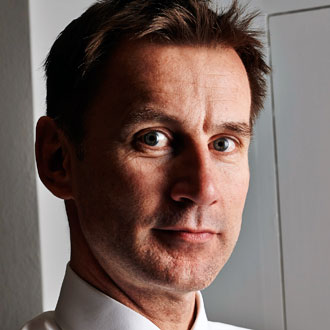Practices’ CQC risk assessments to form core of ‘Trip Advisor-style’ ratings website

GP practices’ risk assessments will be published on the Government’s Trip Advisor-style website unveiled yesterday, which health secretary Jeremy Hunt said will allow ‘patients to compare the performance of their local GP surgery’.
The MyNHS website, which has been trailed by Mr Hunt over the past year, was launched yesterday for secondary care providers, and will be launched for GP practices in December, with their risk assessments – unveiled this week by the CQC – providing much of the data that patients can use to compare practices.
GP leaders said having the ‘bright glare of publicity’ on a website would not help practices that are already struggling.
The risk assessments take data from the GP patient survey and QOF indicators to determine whether practices are ‘risky’, with the regulator giving one in six practices the lowest score of one to two, out of six bands.
However, at the launch of the MyNHS website, the DH said that these risk assessments would be put on the website until practices receive their inspections ratings.
Related stories
GPs must find an alternative to CQC inspections – or watch their colleagues walk
CQC’s ‘risk ratings’ are incredibly damaging – they must be withdrawn
Mr Hunt said: ‘It is a world-first where patients and professionals alike can compare the performance of their local hospital, their local GP surgery, their care services and their local authority, in an easy-to-understand table with regularly updated information.
‘How good is the diabetes care at my local surgery? MyNHS will tell you. What do patients say about the food at my local hospital? It’s there on MyNHS. How good is my local council’s smoking cessation programme? Look on MyNHS. How good is my hip surgeon? MyNHS will be your guide.
‘MyNHS will be the first time any major health economy has gathered such a wide range of critical performance indicators together in a way that will both inform the public and help professionals to improve care by reducing variation. No targets, no sanctions – just information that helps clinicians and managers do what they want to do anyway: improve the safety and care with which they look after NHS patients.’
Mr Hunt also said that patients’ right to the comparison tool would be written into the NHS Constitution.
But Dr Peter Swinyard, chair of the Family Doctor Association, said: ‘I honestly don’t think it will drive up standards, because what motivates most GPs is doing the best that they can for their patients.
‘And I think that the bright glare of publicity, or having everything all over a website, doesn’t really help those practices where the reason they might have less patients having this or that service may be because the amount of funding that practice gets is so miniscule by comparison with other practices doing better, that they can’t have the hot and cold running nurses on tap that mean you can provide these services well.’
The tool for secondary care providers will include an overall ‘traffic light’ rating based on different factors, but, as Pulse revealed earlier this year, this will not be the case for practices.
However, a DH spokesperson told Pulse that practices would be given colour ratings of green for no risk, blue for some risk and red for high risk against each of the 38 indicators used for the risk assessment, as well as their overall risk rating.
The spokesperson added: ‘The colour ratings will be on the indicators, not on the overall practice, and the CQC bandings will go up [on the website] until the GP practice has been inspected.’
The CQC announced earlier this week that it had rated the first two GP practices to go through the complete process as ‘outstanding’.
Pulse October survey
Take our July 2025 survey to potentially win £1.000 worth of tokens











